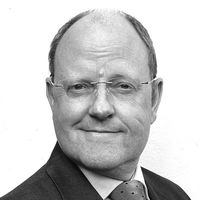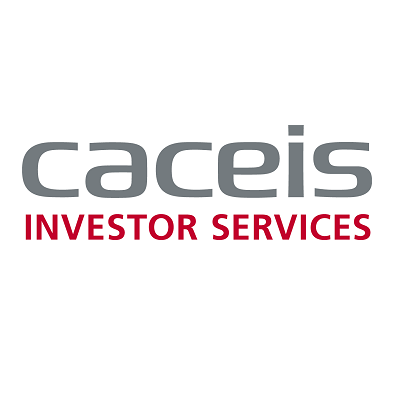Pat Sharman, Country Managing Director, UK and Matthew Ives, Business Development Director, UK, provide a summary of our roundtable with asset managers and host ACDs on the UK’s Sustainability Disclosure Requirements.
The FCA’s proposed Sustainability Disclosure Requirements (SDR) is creating considerable debate in the asset management industry. We recently held a roundtable with asset managers and host ACDs, together with the Investment Association and Clarity AI to debate the new proposals as part of the FCA’s recent consultation on SDR.
In short, the FCA is putting a regulatory structure on the ESG space in the UK, through the SDR proposals, which should not be seen as an equivalent to Europe’s Sustainable Finance Disclosure Regulation (SFDR). It was commented that ‘the FCA looked at the SFDR regime as a starting point, but the more SDR diverged from SFDR, the regulatory fragmentation between the two increased’. What challenges does this create and where next for SDR?
Broad-based objective
SDR is supposed to be ‘economy wide’ – when unpacking the Government’s green finance strategy, it is focusing on the entire investment value chain. There are obligations for issuers and corporates to incorporate and provide non-financial disclosures in line with the ISSB (International Sustainability Standards Board). This information will then flow to asset managers, who will need to provide SDR reporting and this in turn flows to institutional investors, who already have specific reporting requirements based on the Task Force on Climate Related Financial Disclosures. It was recognised that this requires a lot of sequencing to work well. However, sequencing is out of step on the basis that there are different timelines on the implementation of SDR and ISSB.
 SDR is a good example of how the FCA is looking to set a high bar for what is deemed sustainable but it’s important that the proposals serve the need of consumers.
SDR is a good example of how the FCA is looking to set a high bar for what is deemed sustainable but it’s important that the proposals serve the need of consumers.
It was noted that a gap exists between the existing shape of the market and the SDR proposals, which could lead to widescale changes in the market, especially in how portfolio managers construct their funds – and could narrow choice. Furthermore, multi-asset funds and fund of funds are vulnerable to not getting a label, even if they have sustainable objectives. For example, they could be investing in individual funds that meet the labelling criteria for SDR but when aggregating everything at portfolio level, they might fail to meet the SDR requirements – even though they are sustainable. There are also numerous funds in the market with ESG tilts, or exclusions – these are ‘lighter shades of green’ and could fall outside of the labelling definitions, despite demand from investors for such funds, who are increasingly requiring flexibility.
However, at the time of writing, the FCA issued a policy statement on SDR saying it is ‘clarifying how different products, asset classes and strategies can qualify for a label, including multi-asset funds and blended strategies’. Furthermore, the FCA clarified that the SDR proposals will now be published in the Autumn.
Differences
 At a glance, there are key differences between SDR and SFDR. Namely, for SFDR, Article 6, 8 and 9 represent disclosure levels, which means it’s very difficult to assess what the sustainability objective of a fund is. In contrast, SDR allows investors to choose more carefully about what they want their money to do when it comes to sustainability. Recent reports, however, have highlighted that the European Commission is considering axing the Article 9 fund category.
At a glance, there are key differences between SDR and SFDR. Namely, for SFDR, Article 6, 8 and 9 represent disclosure levels, which means it’s very difficult to assess what the sustainability objective of a fund is. In contrast, SDR allows investors to choose more carefully about what they want their money to do when it comes to sustainability. Recent reports, however, have highlighted that the European Commission is considering axing the Article 9 fund category.
Meanwhile, in the US, proposals are underway to develop fund categories that mirror a bit more closely with the UK’s SDR requirements – it was commented that rules are expected in Autumn this year.
Finally, there will still be tweaks around the edges for SFDR. There is a current consultation to introduce thresholds for Article 8 funds that want to use sustainability or ESG into their name.
A balancing act
‘Investors have more to consider and more to not understand’.
There were differing viewpoints around broadening the labels. ‘End-investors are now becoming more mindful about where their money is invested and the SDR labels will help investors to better filter how they choose to invest their money for sustainability’
If labels are expanded to have different shades of green, this could be more confusing for the end-investor – ‘I don’t think adding more options to SDR will make it easy for end-investors…what needs to happen is more transparency about how a fund is meeting its sustainability goals’. It was commented that the term sustainability investing will mean different things to different people, so proper and transparent reporting and communication around a fund’s sustainability goals becomes much more important.
Challenges remain. ‘I don’t know if end-investors know what they want. The SDR proposals are already determining certain levels of sophistication and narrowing of views – investors want something that is more sustainable than they have now, but they might not necessarily want to invest in an impact fund’. In a continuation of the discussion around end-investor understanding it was raised that ‘impact’ might not be a term that is well-understood, but tags such as ‘light green’ or ‘dark green’ will make it easier for end-investors to make choices.
Focusing on the end-investor was the watchword throughout the roundtable. ‘Some investors may just want to invest in sustainable funds without getting into the nitty-gritty – others will be more sophisticated’.
It's here that the interesting concept of ‘tags’ was talked about. It was said that from an end-investor perspective, they might ask ‘I want my fund to have these specific ESG elements to it’, which makes it easier to understand. ‘Removing the mutual exclusivity of these labels and adding tags for funds could make things simpler for the end-investor’
It was also commented that education is going to play a key role so investors can better interpret the SDR label – especially given consumer duty and the focus on accessibility and comprehension. Furthermore, it was raised that ‘Education will also be key for the industry, especially in how the labels are going to be used across the distribution chain so they do become a marketing tool’. Challenges were also raised about the potential narrowing of access or visibility for end-investors to funds that don’t have a label – ‘as distributors might be inclined to focus their efforts more on funds that have a label and end-investors could miss out on good investment opportunities’.
How complex is the ‘improvers category’
‘End-investors will struggle to understand the improvers category – even institutional investors will require a lot more information’ – this comment underscored the broad agreement across the roundtable that this category is complex. To begin with, there is a question around timeframe – ‘How long can an improver be an improver before it needs to exit a fund’s portfolio?’
As part of the SDR guidance, identification of key performance indicators will be required so asset managers can hold themselves accountable. This will require escalation plans that address fund holdings in investments that are not meeting their sustainability goals or targets.
And then there is the challenge of data, especially in assessing scope 1, 2 and 3 emissions and testing the robustness and validity of transition plans. This requires strong evidence of stewardship and data in the monitoring of how companies are improving their sustainability goals. And it’s here that everyone agreed, transparency is key – ‘It’s not about the fact that all methodology has to be the same between each asset manager - you want to know the transparency of that methodology’. For example, two distinctly different funds can say they comply with this category, but they have different methods on how they define ‘improvers’.
The point was then raised that the lack of definition in ‘improvers’ could lead this category to be a catchall for funds that can’t fit into the remaining two categories.
Are fund boards sustainability ready?
It was agreed that expectations continue to grow about the role of fund boards in challenging sustainability criteria. For fund boards ‘it’s critical that they get access to the right information so that they can challenge and set key performance indicators that define what they are looking for – and help them make decisions’. It was also recognised that fund boards may not necessarily have the knowledge on areas such as ESG and climate risks to be in a position to ask the right questions. So education remains a key factor.
The discussion also referenced the challenges of host ACDs, which will be required to have their own data sources so they can get comfortable with how the asset managers they oversee are meeting sustainability objectives.
Sustainable focus category – is the 70% threshold too high?
The discussion touched on the 70% threshold in the SDR sustainable focus category. It was observed that ‘it’s hard to say to a retail investor that this fund is sustainable, but it has a lower percentage in sustainability-type investments’ and that ‘the 70% threshold is welcomed – SFDR lacked specifics – and from a compliance and risk perspective, managing the 70% threshold should be fine for asset management firms as they already have systems and controls to manage aspects like investment parameters’. Furthermore, there are practical issues to consider – for example, ‘fluctuations of the underlying assets can tip funds above or below this threshold’.
Finally, the FCA did not attempt to place a definition around sustainability, although it was commented that ‘some form of guidance is needed’. For example, in the SFDR regulations, Article 2 (17) attempts to define sustainable investments across three areas – some contribution to social or economic objectives, do no significant harm (DNSH) principle and good governance. It’s up to asset managers how they navigate around this framework. However, ‘more needs to be done to define sustainability in a UK context’.
SDR in spirit is here already and other considerations
There are still questions around how the FCA will police SDR? It was noted that ‘those launching new funds are already being held to the standard of the SDR consultation paper for new fund authorisations’. It was recognised that the FCA already has plenty of tools available to them to monitor SDR through their thematic reviews. Elements of SDR might also find their way into assessment of value, which remains firmly on the FCA’s radar.
And are there unintended consequences of SDR we should be thinking about? If asset managers want to demonstrate a track record in their fund relating to the SDR labels, ‘will this create stagnation in the securities market as asset managers will want to keep hold of what they have to demonstrate their sustainability track record….do labels re-engineer the way funds are managed?
Finally, will asset managers weigh up the challenges of fitting their funds into one of the labels and simply decide to fall outside? Recently, we have seen ‘many SFDR Article 9 funds that have been downgraded because asset managers decided that this is not what was required’.
Looking forward
The route to SDR is becoming well-travelled. The recent FCA update on its SDR and investment labels consultation highlighted that the regulator intends to publish the policy statement in the third quarter of this year and that ‘the proposed effective dates will be adjusted accordingly’. There are many views to consider but what is encouraging is that the FCA is still firmly seeking to introduce robust standards and to ensure that the UK ‘remains at the global forefront of sustainable investment’.
A recap of the SDR’s three categories
The FCA’s behavioural research found that consumers are increasingly demanding financial products take sustainability into account – and this has been a key factor shaping the SDR proposals. Here, investment products must meet one of the three clearly defined criteria:
- Sustainable Improvers: The investment product of fund is investing in companies that are clearly transitioning to better outcomes. The main concept of this category is stewardship. It means asset managers evidencing how they are engaging with and monitoring the companies they are investing in to validate if they are on the expected path to reduce their carbon emissions.
- Sustainable Focus: The fund has a sustainable focus.
- Sustainable Impact: This means a fund has a clear objective of delivering a positive environment or social impact.
These three labels are a change from the earlier expectation that the regulation would stipulate five categories. Furthermore, the key difference between SDR and SFDR is the requirement for a minimum percentage of sustainable investments in its focus category, which is 70%.




